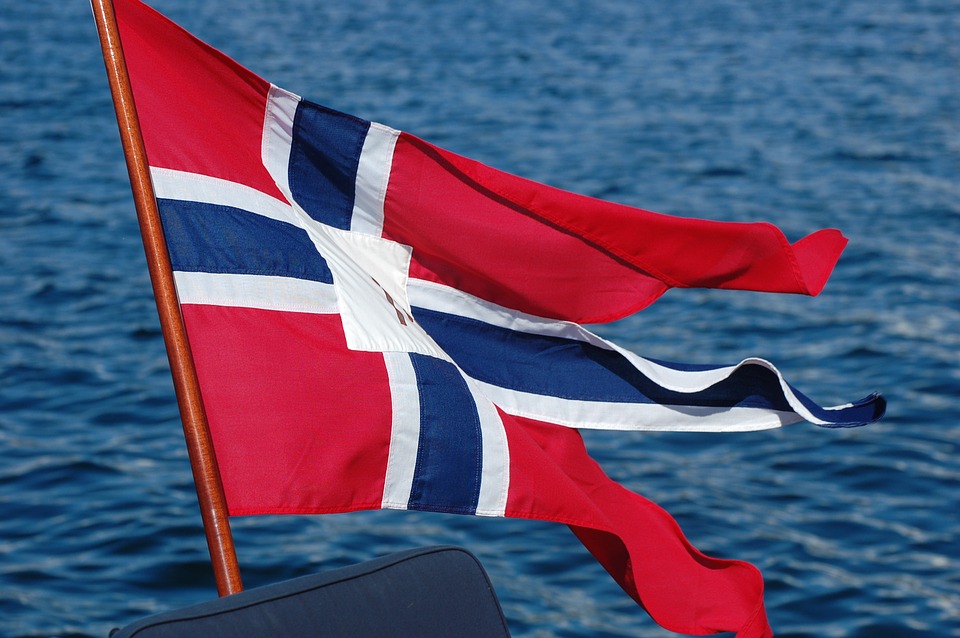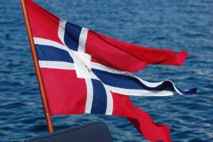Net profit of the Norwegian government from its oil and gas assets decreased by 13% in January-September 2015, compared to the same period last year - from 83,3 to 72.3 billion kroner (from $ 13.66 to $ 9.16 billion based on the exchange rate difference ). Financial statements of the state-owned corporation Petoro, published on Tuesday, November 3, evidence this. This is a management company in charge of fund “State's Direct Financial Interest” (SDFI), which accumulates all oil and gas assets owned by authorities on the Norwegian continental shelf.
According to Bloomberg, if the current trend stays, direct oil and gas incomes from SDFI can upgrade six-years minimum for the entire 2015: in 2009, the government’s net profit from their energy portfolio amounted to 97 billion kroner (about $ 14.8 billion at average exchange rate in 2009 ). At the end of 2014, when the oil market crisis has begun, SDFI revenues totaled 111 billion kroner ($ 16.92 billion at average exchange rate for the year).
Petoro does not make any official annual revenue forecasts.
Public investments in the oil and gas industry through the fund SDFI were reduced as well: in the first nine months of 2015, they accounted for 22.5 billion kroner ($ 2.85 billion), 21% less than a year earlier.
- Fall of the index reflects saving of capital expenditures on development projects and reducing some operating investments, - says Petoro.
SDFI’s revenue decreased by 10% too, to 119.5 billion kroner in the first three months of 2015 ($ 14 billion at exchange rate of the end of September). In the release, Petoro pointed out that the krone’s fall against the US dollar helped to smooth the decline in oil prices. For a year, starting from September 2014, the Norwegian currency has lost 32% of its value against the dollar. However, the oil prices collapse was even stronger, which is also marked in Petoro’s document, (average price per barrel in January-September 2015 amounted to 437 kroner against 655 kroner in 2014).
At the same time, Norway is increasing its oil production to cover part of the losses from lower prices. However, the growth rate is too small: just over 2% (from 399 th. barrels. per day on average in January-September 2014 to 409 th. barrels in 2015).
In addition to direct revenue from SDFI, the Norwegian government receives income in the form of oil and gas production taxes from private companies and dividends from Statoil, the largest energy corporations of the country. Share of state participation in Statoil is 67%. Last week, the company reported a net loss of $ 330 million for the third quarter 2015. A year earlier, quarterly loss exceeded $ 700 million.
Statoil managed to reduce financial losses through cost reductions, primarily in capital investment. "We will continue to cut back on our major investment costs, as the sharp decline in oil prices during the quarter showed that we need to strive for greater profitability," - said Head of Statoil, Eldar Saetre.
First steps to improve the economic efficiency came quite soon: this Monday, Statoil reported early breaking a contract with the Norwegian drilling company Songa Offshore to use its oil platform Songa Trym. In October, Statoil’s representative said that work on the platform has been suspended, as it turned out to be worked-out. Statoil was planning to use the platform until the contract expires (March 2016), but has not found a free well, and immediately decided to give up the lease.
The oil rig’s rent ends in mid-November. According to Songa Offshore, the company will receive $ 377 thousand for each unused day (a total of about $ 42 million) from Statoil for early termination of the contract. The drilling company plans to dismantle a rig from the current well, and then to look for new tenants again.
Analyst at the consulting company Nordea Markets Janne Kverneland considers such plans too optimistic: Statoil produces over 70% of the Norwegian oil and gas. At such a time when the major player began to cut costs, drilling companies cannot find tenants and buyers for their platforms in the North Sea. According to Kverneland, about 20 rigs in British and Norwegian waters may be scrapped in the coming years. "There is already a rigs cemetery in the North Sea - she said to Bloomberg. - Contracts for many towers are ending now, or they are just inactive. If they are not leased by Statoil, then who will need them? "
Falling oil prices and decline in investment slows the Norwegian economy’s growth. For the entire 2014, GDP of Norway increased by 2.2%, but we can observe stagnation by end of this year. According to Statistics Norway, in the first quarter of 2015, economic growth for the previous quarter was only 0.1%; in the second quarter, GDP fell by the same 0.1%.
If we exclude hydrocarbon production from calculations, the economy of mainland Norway is not stagnant, but growing, albeit small rates: 0.3% in the first, and 0.2% in the second quarter of 2015. The general oil and gas revenues in the Norwegian budget for this year are projected at 342 billion kroner ($ 46.3 billion at January 1, 2015), or 21.2% of all government revenues.
In early October, the government announced that for the first time in history, they are going to cover the budget expenditures with the National Welfare Fund - Norges Bank Investment Management (NBIM). This is the largest state fund, which operates assets with the market value of 7.35 trillion kroner ($ 863 billion). According to the Government, the fund will receive 204 billion kroner in oil revenues in 2016, while the authorities will need to withdraw 208 billion kroner from it, thus forming a deficit of 4 billion kroner (about $ 450 million).
Seeking means in the welfare fund to cover deficit provoked criticism from opponents of commodity economy. Siv Jensen, Finance Minister and leader of the right-wing conservative Progress Party, says: "Oil has ceased to be the engine of our growth. Therefore, we are faced with the problem of restructuring, and the best thing we can do right now is to focus efforts on supporting competitiveness of the private sector."
According to Bloomberg, if the current trend stays, direct oil and gas incomes from SDFI can upgrade six-years minimum for the entire 2015: in 2009, the government’s net profit from their energy portfolio amounted to 97 billion kroner (about $ 14.8 billion at average exchange rate in 2009 ). At the end of 2014, when the oil market crisis has begun, SDFI revenues totaled 111 billion kroner ($ 16.92 billion at average exchange rate for the year).
Petoro does not make any official annual revenue forecasts.
Public investments in the oil and gas industry through the fund SDFI were reduced as well: in the first nine months of 2015, they accounted for 22.5 billion kroner ($ 2.85 billion), 21% less than a year earlier.
- Fall of the index reflects saving of capital expenditures on development projects and reducing some operating investments, - says Petoro.
SDFI’s revenue decreased by 10% too, to 119.5 billion kroner in the first three months of 2015 ($ 14 billion at exchange rate of the end of September). In the release, Petoro pointed out that the krone’s fall against the US dollar helped to smooth the decline in oil prices. For a year, starting from September 2014, the Norwegian currency has lost 32% of its value against the dollar. However, the oil prices collapse was even stronger, which is also marked in Petoro’s document, (average price per barrel in January-September 2015 amounted to 437 kroner against 655 kroner in 2014).
At the same time, Norway is increasing its oil production to cover part of the losses from lower prices. However, the growth rate is too small: just over 2% (from 399 th. barrels. per day on average in January-September 2014 to 409 th. barrels in 2015).
In addition to direct revenue from SDFI, the Norwegian government receives income in the form of oil and gas production taxes from private companies and dividends from Statoil, the largest energy corporations of the country. Share of state participation in Statoil is 67%. Last week, the company reported a net loss of $ 330 million for the third quarter 2015. A year earlier, quarterly loss exceeded $ 700 million.
Statoil managed to reduce financial losses through cost reductions, primarily in capital investment. "We will continue to cut back on our major investment costs, as the sharp decline in oil prices during the quarter showed that we need to strive for greater profitability," - said Head of Statoil, Eldar Saetre.
First steps to improve the economic efficiency came quite soon: this Monday, Statoil reported early breaking a contract with the Norwegian drilling company Songa Offshore to use its oil platform Songa Trym. In October, Statoil’s representative said that work on the platform has been suspended, as it turned out to be worked-out. Statoil was planning to use the platform until the contract expires (March 2016), but has not found a free well, and immediately decided to give up the lease.
The oil rig’s rent ends in mid-November. According to Songa Offshore, the company will receive $ 377 thousand for each unused day (a total of about $ 42 million) from Statoil for early termination of the contract. The drilling company plans to dismantle a rig from the current well, and then to look for new tenants again.
Analyst at the consulting company Nordea Markets Janne Kverneland considers such plans too optimistic: Statoil produces over 70% of the Norwegian oil and gas. At such a time when the major player began to cut costs, drilling companies cannot find tenants and buyers for their platforms in the North Sea. According to Kverneland, about 20 rigs in British and Norwegian waters may be scrapped in the coming years. "There is already a rigs cemetery in the North Sea - she said to Bloomberg. - Contracts for many towers are ending now, or they are just inactive. If they are not leased by Statoil, then who will need them? "
Falling oil prices and decline in investment slows the Norwegian economy’s growth. For the entire 2014, GDP of Norway increased by 2.2%, but we can observe stagnation by end of this year. According to Statistics Norway, in the first quarter of 2015, economic growth for the previous quarter was only 0.1%; in the second quarter, GDP fell by the same 0.1%.
If we exclude hydrocarbon production from calculations, the economy of mainland Norway is not stagnant, but growing, albeit small rates: 0.3% in the first, and 0.2% in the second quarter of 2015. The general oil and gas revenues in the Norwegian budget for this year are projected at 342 billion kroner ($ 46.3 billion at January 1, 2015), or 21.2% of all government revenues.
In early October, the government announced that for the first time in history, they are going to cover the budget expenditures with the National Welfare Fund - Norges Bank Investment Management (NBIM). This is the largest state fund, which operates assets with the market value of 7.35 trillion kroner ($ 863 billion). According to the Government, the fund will receive 204 billion kroner in oil revenues in 2016, while the authorities will need to withdraw 208 billion kroner from it, thus forming a deficit of 4 billion kroner (about $ 450 million).
Seeking means in the welfare fund to cover deficit provoked criticism from opponents of commodity economy. Siv Jensen, Finance Minister and leader of the right-wing conservative Progress Party, says: "Oil has ceased to be the engine of our growth. Therefore, we are faced with the problem of restructuring, and the best thing we can do right now is to focus efforts on supporting competitiveness of the private sector."



















